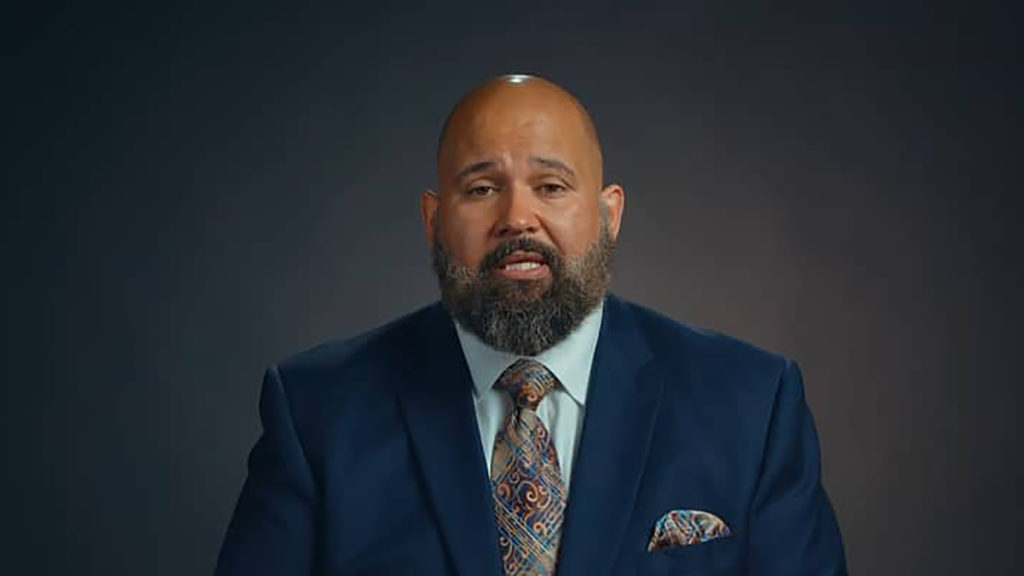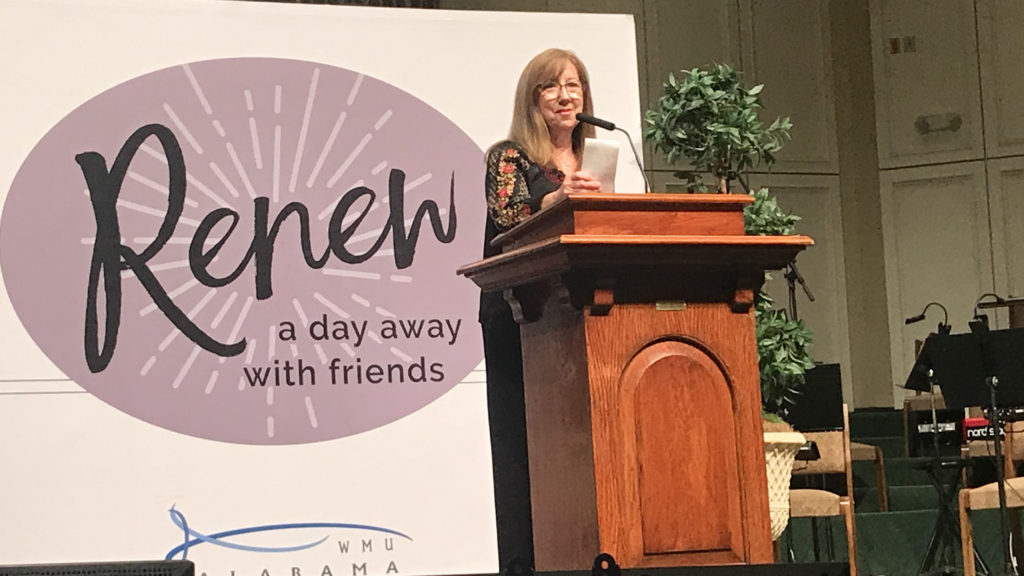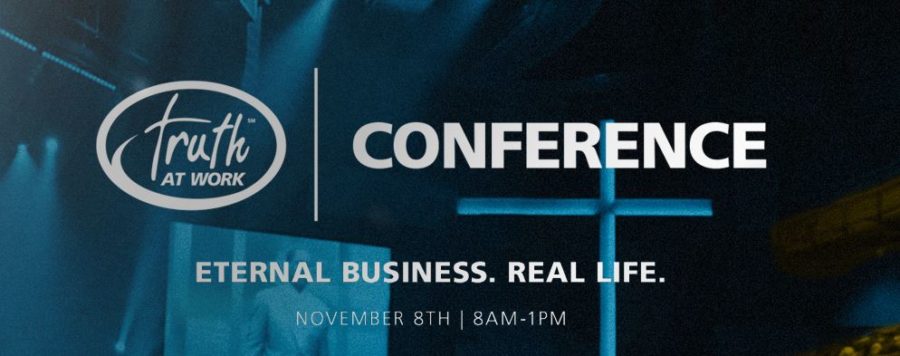“The craziness happens,” Mark Wakefield said. “It’s there and you’ve got to do something.”
Citing recent examples of armed encounters at churches, including the March 6 shooting of an Idaho pastor in his church parking lot, Wakefield and other Alabama Baptist State Board of Missions (SBOM) personnel addressed “The Basics of Church Security” on March 10 to more than 100 participants.
Wakefield was joined by SBOM’s Jim Swedenburg and Lee Wright in addressing issues such as how to protect children in church, how to secure church grounds, what to do in the event of a shooting and how to make a church financially secure.
With a background in pastoral ministry as well as law enforcement, Wakefield has a unique perspective on how to respond to the imminent threat of physical violence in church.
“I want to balance the tactical side of that with the ministry side,” said Wakefield, SBOM’s state chaplaincy strategist. “Church security is not just about [if we should] have armed people walking around during the worship service.”
The question is “more broad based,” he said. “Should we be willing to lay down our lives or should we protect our congregations and our flock? I think that’s a question that ought to be wrestled with.”
Churches are first and foremost the body of Christ, Wakefield said, and as such we have a “relational purpose” to care for those outside of the church. The goal is to welcome new people in and engage them and minister to them. But how do you blend an “open door policy” with a secure facility?
By being aware, Wakefield said.
“You need to, as a church, think through the ‘what ifs.’ … Start planning now for how you’re going to respond to any kind of disruption, particularly the threat of physical violence.”
The most common threats a church will face are a noncustodial parent trying to take a child from church and someone who is chemically or mentally unstable entering the church.
“Have people who are prepared to deal with situations and practice and rehearse and talk about it … because it’s tough to [handle] under the best of circumstances,” Wakefield said. “It’s tougher if you haven’t given it any thought.”
Churches can look at a variety of resources to develop a high-quality emergency operations plan.
“Use guides and think through, ‘If we’re going to do this, how are we going to make it the best we can?’” Wakefield suggested.
For instance if churches decide to have congregants carrying firearms in every service, then those congregants need to be certified yearly by a National Rifle Association instructor, he said.
Plan and prepare
Regardless of what churches decide regarding the armed aspect of security, planning and preparation are paramount to church security.
“In your planning look at all you can, make a good plan, ask somebody to evaluate it for you and then practice what you plan,” Wakefield said. “When the event happens, you protect lives first and foremost and then you keep the crisis from getting worse. Then you protect property.”
Wright agreed that people are the No. 1 priority, offering that a church security team, armed or not, is one way to protect congregants.
“You should have greeters everywhere and have people at every door,” said Wright, SBOM’s coordinator of church compensation services. “[These greeters] are the first line of defense.”
Doing regular walk-throughs of facilities, especially areas where children and youth are, is a great way to ward off any suspicious activity, Wright said. This includes issues of child sexual abuse.
It can happen anywhere
Sexual abuse is often viewed with the attitude of “that would never happen here,” he said, but it can happen anywhere in churches of any size.
The two main areas where churches need to focus their attention when dealing with child care are proper screening and proper supervision.
“We want to have an application, have a criminal records or background check — a standard of care for everyone who works with minors,” Wright said.
Key leaders also should be regularly stopping by classes, day cares, nurseries — anywhere there are children. A good rule of thumb is to enact the “two adult rule,” Wright encouraged. This is an effort to have two adults in all classrooms with children at all times.
“The attorney general said thus far there has not been a case of child sexual abuse where the two [adult] rule was enacted,” Wright said.
“The background check protects the church from lawsuits in negligent hiring and the two adult rule is the one that protects the children.”
Background checks should be run every three to five years, Wright recommended, for everyone from the pastor on down.
No matter the threat, Wakefield said, church leaders need to practice situational awareness at all times and pray for discernment. And don’t forget to think about the recovery from a crisis.
“A lot of churches think about the crisis but not the aftermath,” Wakefield said. “Think about recovery. This is absolutely critical for the survival of your congregation mentally, emotionally, spiritually and even relationally in the community.”
Other overall security suggestions for churches to consider include:
- Buying additional insurance now.
- Having a church spokesperson in place.
- Planting low, thorny bushes outside all windows.
- Encouraging members to lock their cars and not leave purses laying around.
- Increasing lighting around church facilities.
Addressing the financial security of churches, Swedenburg, director of SBOM’s office of Cooperative Program and stewardship development, offered a startling statistic.
Effective procedures
“Statistically speaking, 99 percent of churches in this room have had a financial anomaly occur,” he said, adding that he hears “at least once a month from a church who has dealt with a discrepancy or embezzlement over $10,000.”
This is why it’s important to have good and effective procedures for handling money, he said. Key among them is separating the financial duties. Swedenburg suggests having a stewardship committee authorize all checks, a different person recording the transactions and yet another person reconciling the bank statement.
There also should always be at least two people for each step of duty, he emphasized.
“Separation not only protects the church but the financial worker. … If something goes wrong, who are [church leaders] going to look at? Make that personal (to the financial worker).”
Embezzlement from church funds requires two conditions, Swedenburg said — somebody has to need or feel as though they need money and they have no accountability.
“We need to be careful to do our part to keep those people who have that weak moment, that crash in their life that puts them in a position to take that other money to get by,” he said.
So what should churches look out for?
- Checks made out to “Cash”
- Missing credit card receipts
- Online fund transfers
- Misdirection of funds
To protect members from temptation, it’s important for a church to define roles and clearly outline procedures, Swedenburg said.
“You need to have strong policies with definitions of what each individual in that process is expected to do,” he said, noting that defined user roles and permissions help financial workers stick to their assigned duties.
Churches also can use the following guidelines to maintain financial security:
- Record-keeping and cash should never be recorded by the same person.
- Reconcile bank accounts monthly by a person not accountable for writing checks.
- Have a two- to three-person audit or stewardship committee.
- Create a paper trail for every transaction.
- Record every gift.
- Retain offering envelopes for three years.
- Maintain member contribution records.
- Audit accounting records and internal controls annually.
- Never sign blank checks.
- Rotate those who count offering money and always have two present.
- Instruct the bank in writing to never cash checks made out to the church.
- Use serially numbered checks or use electronic checking to make payments.
Helpful resources
Book
- “The Church Guide to Internal Controls” by Richard J. Vargo
Video
- “Run. Hide. Fight. Surviving an Active Shooter Event” by Ready Houston on youtube.com
Websites
- publicdata.com
- brotherhoodmutual.com/index.cfm/resources/
- guideone.com/safety-resources/
- fema.gov (search “emergency operations from house of worship”)






Share with others: